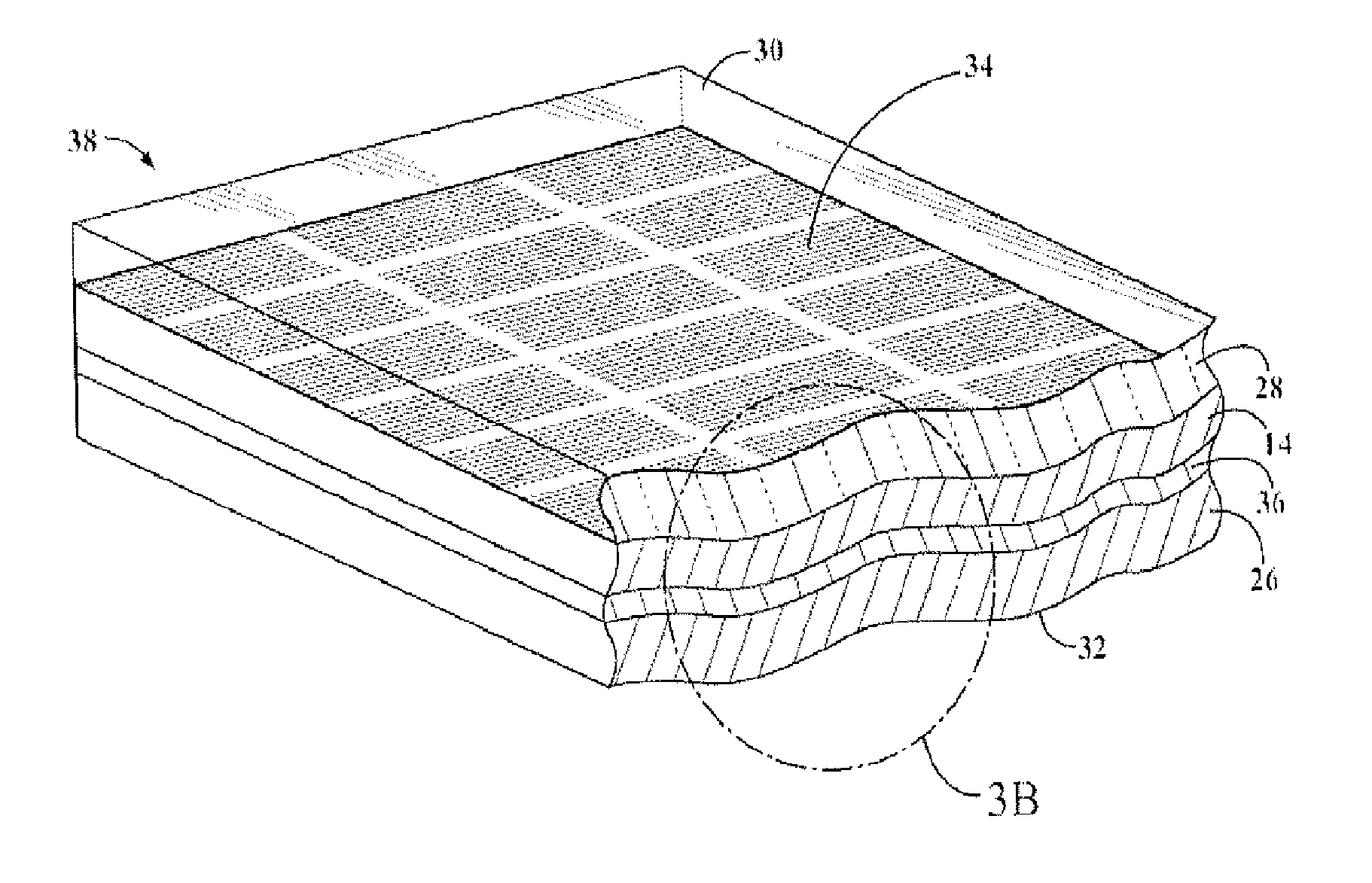Organosiloxane block copolymer
a technology of organic sulfonate and copolymer, which is applied in the direction of radiation controlled devices, semiconductor/solid-state device details, coatings, etc., can solve the problems of increasing production costs and complexities, ineffective modules, and high cost of encapsulants and encapsulation methods known in the art, and achieves low cost, high light transmittance, and low complexity.
- Summary
- Abstract
- Description
- Claims
- Application Information
AI Technical Summary
Benefits of technology
Problems solved by technology
Method used
Image
Examples
example 1
Formation of Organosiloxane Block Copolymer Using Oxime Terminated PDMS
[0085]In a first example, an organosiloxane block copolymer is formed using oxime terminated PDMS and has approximately 11 mol % of Phenyl-T units which corresponds to about 20 wt % of Phenyl-T units. More specifically, a 1 L 3-neck round bottom flask is loaded with a phenylsilsesquioxane hydrolyzate (Dow Corning 217 Flake, 24 g, 0.175 mol Si) and toluene (Fisher Scientific, 80 g) to form a mixture. The flask is equipped with a thermometer, Teflon stir paddle, and a Dean Stark apparatus pre-filled with toluene and attached to a water-cooled condenser. A nitrogen blanket is then applied. An oil bath is used for heating.
[0086]The mixture is heated at reflux for 30 min and subsequently cooled to 100° C. At this point, a solution of oxime capped PDMS, formed using the method described above, is added. More specifically, the oxime capped PDMS is formed using 200 g toluene, 96 g silanol terminated PDMS, Gelest DMS-S27 ...
example 2
Formation of Organosiloxane Block Copolymer Using Oxime Terminated PDMS
[0087]In a second example, an organosiloxane block copolymer is formed using oxime terminated PDMS and has approximately 17 mol % of Phenyl-T units which corresponds to about 28 wt % of Phenyl-T units. More specifically, a 500 mL 3-neck round bottom flask is loaded with a phenylsilsesquioxane hydrolyzate (Dow Corning 217 Flake, 16.93 g, 0.124 mol Si) and toluene (Fisher Scientific, 51.4 g) to form a mixture. The flask is equipped with a thermometer, Teflon stir paddle, and a Dean Stark apparatus pre-filled with toluene and attached to a water-cooled condenser. A nitrogen blanket is then applied. An oil bath is used for heating.
[0088]The mixture is heated at reflux for 30 min and subsequently cooled to 100° C. At this point, a solution of oxime capped PDMS, formed using the method described above, is added. More specifically, the oxime capped PDMS is formed using 60 g toluene, 43.07 g silanol terminated PDMS, Gele...
example 3
Formation of Organosiloxane Block Copolymer Using Oxime Terminated PDMS
[0089]In a third example, an organosiloxane block copolymer is formed using oxime terminated PDMS and has approximately 21 mol % of Phenyl-T units which corresponds to about 34 wt % of Phenyl-T units. More specifically, a 500 mL 3-neck round bottom flask is loaded with a phenylsilsesquioxane hydrolyzate (Dow Corning 217 Flake, 20.4, 0.149 mol Si) and toluene (Fisher Scientific, 61.2 g) to form a mixture. The flask is equipped with a thermometer, Teflon stir paddle, and a Dean Stark apparatus pre-filled with toluene and attached to a water-cooled condenser. A nitrogen blanket is then applied. An oil bath is used for heating.
[0090]The mixture is heated at reflux for 30 min and subsequently cooled to 100° C. At this point, a solution of oxime capped PDMS, formed using the method described above, is added. More specifically, the oxime capped PDMS is formed using 78.8 g toluene, 39.6 g silanol terminated PDMS, Gelest ...
PUM
| Property | Measurement | Unit |
|---|---|---|
| mol % | aaaaa | aaaaa |
| mol % | aaaaa | aaaaa |
| light transmittance | aaaaa | aaaaa |
Abstract
Description
Claims
Application Information
 Login to View More
Login to View More - R&D
- Intellectual Property
- Life Sciences
- Materials
- Tech Scout
- Unparalleled Data Quality
- Higher Quality Content
- 60% Fewer Hallucinations
Browse by: Latest US Patents, China's latest patents, Technical Efficacy Thesaurus, Application Domain, Technology Topic, Popular Technical Reports.
© 2025 PatSnap. All rights reserved.Legal|Privacy policy|Modern Slavery Act Transparency Statement|Sitemap|About US| Contact US: help@patsnap.com



